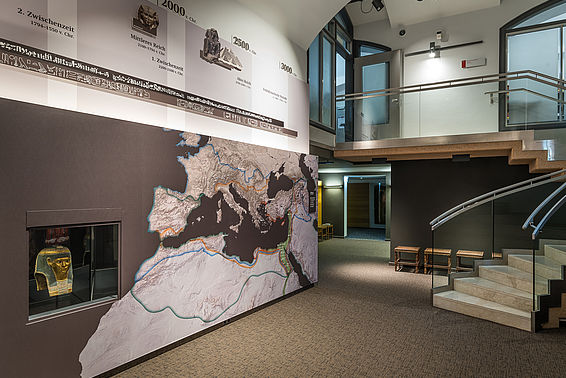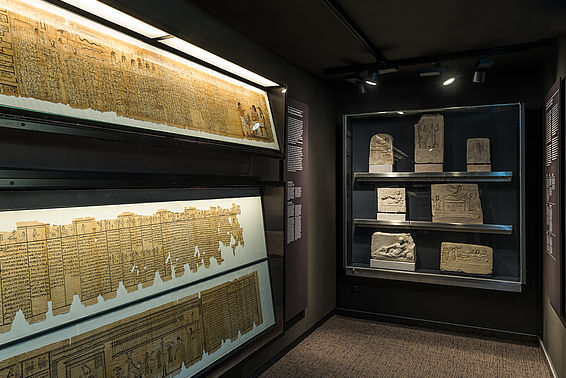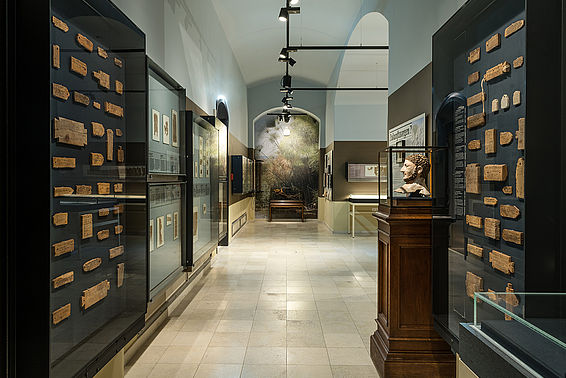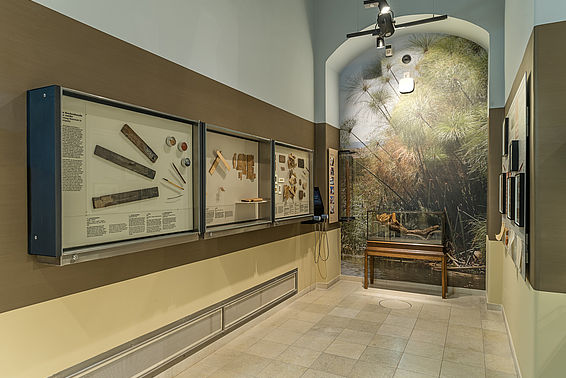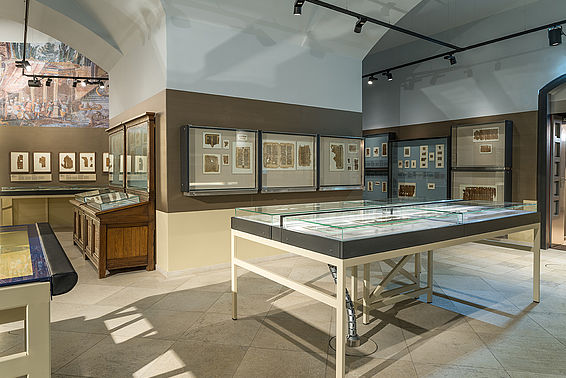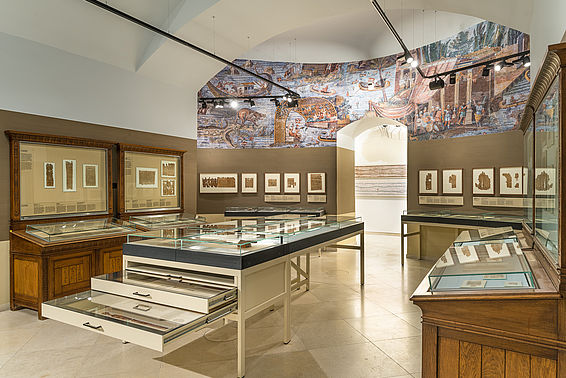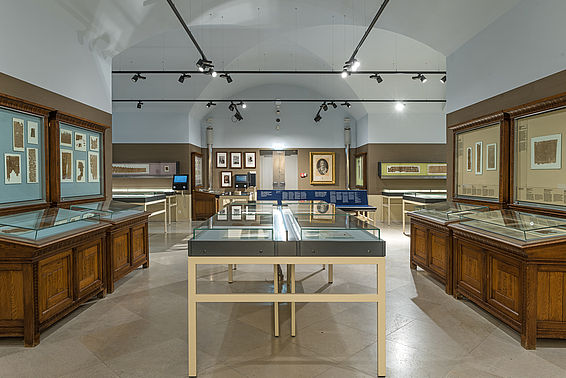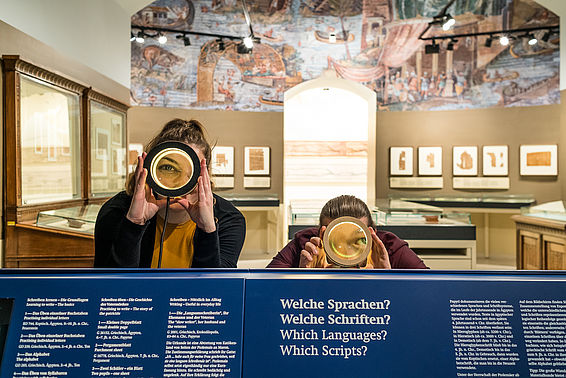Living contemporary documents from the land of the Pharaohs
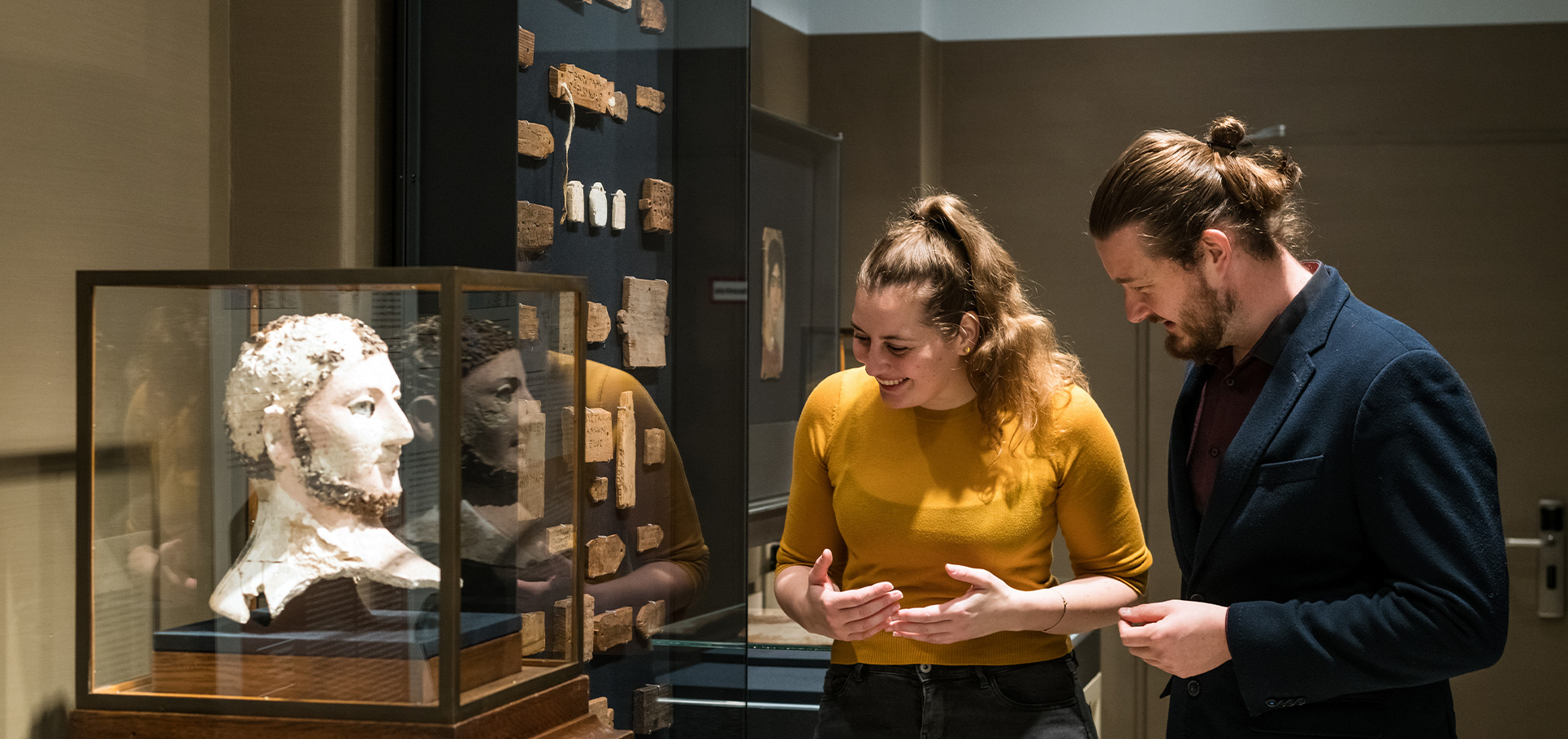
The Papyrus Museum of the Austrian National Library showcases the world's largest exhibition of ancient documents. In the permanent exhibition you can expect around 400 original objects as well as several media stations. There is also an audio guide in German, English and for the hearing impared, an experience room on the ancient cult of the dead and a children's area for the cultural education program. A specially designed media table provides information about the work of the papyrologists, the ancient lessons, the languages and scripts represented on papyrus as well as the magical sator square.
Literary papyri
The literary papyri on display cover ancient Egyptian literature (e.g. a hymn to the city of Pi-Ramesses), Greek and Latin classics (e.g. a choral song of Euripides or the Histories of Sallust), as well as Coptic martyr legends and an Arab version of the Alexander romance. In the area of religious writings, the spectrum ranges from the thousand-year text history of the Egyptian Book of the Dead through important text witnesses of biblical scriptures to very early manuscripts of the Quran.
Documentary papyri
Documentary papyri provide you with insights into the real lives of simple people and shed light on many aspects of material culture. You can find all manner of private and official writings here: school exercises, business, private and official correspondence, legal certificates with varying content (loans, lease and purchase agreements, marriage contracts, promissory notes, etc.) or official tax collection documents and private estate administration.
Everyday language in ancient Egypt
In addition to the extensive and detailed information about specific living conditions, the papyri, which are often written in colloquial language, administrative jargon or legal diction, show you the developments and nuanced shades of the ancient languages. The varying genres of the semi-literary papyri provide an insight into the popular piety and religious beliefs of simple people, into their fears, hopes and ideals. Developments that had an impact on large parts of the world such as the coming together of Egyptian and Greco-Roman culture, the spread of Christianity and monasticism or the establishment of the Arab domination are reflected in the documents on display. They are extremely important to help understand daily live, legal cultures and mentalities in ancient Egypt.

